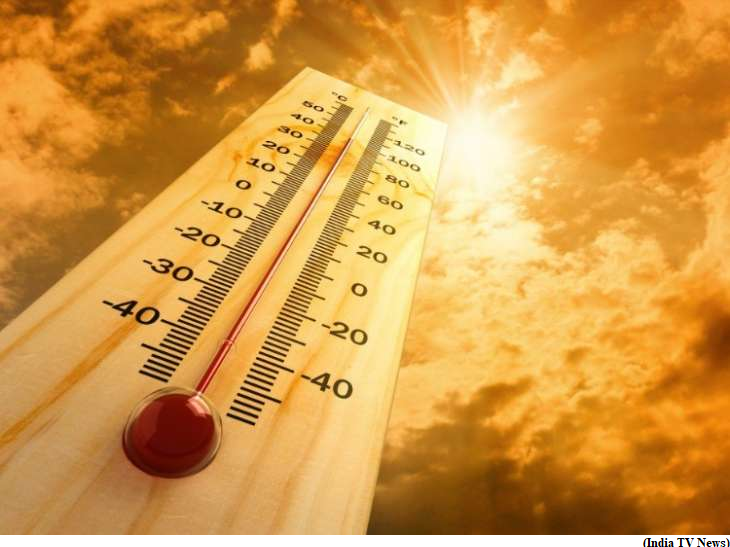Dealing with extreme heat (GS Paper 3, Environment)

Context:
- Around 350 million Indians were exposed to strong heat stress between April and May 2022.
Rising temperature:
- Between 1990 and 2019, summer temperatures on average rose by 0.5-0.9°C across districts in Punjab, Haryana, Uttar Pradesh, Bihar and Rajasthan; about 54% of India’s districts have also seen a similar rise in winter temperatures.
- Between 2021 and 2050, it is expected that the maximum temperature will rise by 2-3.5°C in 100 districts and by 1.5– 2°C in around 455 districts.
- Similarly, winter temperatures will rise between 1°C and 1.5°C in around 485 districts. Such a sharp rise in urban temperatures is rare.
- However, with climate change exacerbating local weather patterns, we are likely to see April-May temperatures reaching record highs every three years.
Weather variability:
- Indian cities are beset with the urban heat island effect, with temperatures 4-12°C higher than rural outlying areas. Meanwhile, humidity has exacerbated the felt temperature, with wet bulb temperatures often rising above 32°C in many cities.
- More recently, northern India has seen significant variability in the weather. Cold weather in January was followed by a heat wave in February and early March, and hailstorm and heavy rain in the past few weeks.
- Weather variability has consequences, especially for agriculture.
- For example, 90% of India’s cumin production is from Gujarat and Rajasthan. The recent weather variability has destroyed the majority of the cumin crop in Rajasthan. From agricultural crop losses, it is a short step towards drought and higher mortality.
Impact on Labour productivity:
- Rising temperatures have also led to increasingly unliveable cities. For labourers doing heavy work, heat exposure leads to a loss of 162 hours per year, as per one study.
- A rise in temperatures directly impacts labour productivity. About 50% of India’s workforce is estimated to be exposed to heat during their working hours.
- This includes marginal farmers, labourers at construction sites and street vendors parlaying their produce on the streets; increasingly, even gig economy workers are affected.
Mitigating the problem:
- Greening could help mitigate part of the problem. Ideally, for every urban citizen in India, there should be at least seven trees in the urban landscape.
- Development plans for Tier 2 and Tier 3 cities can set up a mandate to increase urban surface area that is permeable, while pushing to increase the density and area of urban forests.
- Expanding wetlands and restoring dead and decaying ponds/lakes may also help ensure ecological functioning along with reducing urban heat.
Reducing the urban heat island effect:
- This will require a push for greater usage of permeable materials in civic infrastructure and residential construction and enhancing natural landscapes in urban areas.
- Urban layouts such as brick jalis for ventilation and terracotta tiles to allow hot air to escape, and curbs on anthropogenic heat emissions from vehicles, factories, etc. may be considered.
- Urban building standards should be upgraded to avoid usage of heat-absorbent galvanized iron and metal roof sheets.
- Additionally, using cleaner cooking fuels will reduce indoor air pollution, which may also help reduce urban heat.
- Streets with low ventilation may need further expansion, or an increase in natural vegetation.
Example of Chandigarh:
- The urban design of Chandigarh considered climate responsiveness as a key factor. The city was set up by the foothills of the Shivaliks, between two river beds, while natural green belts were incorporated within the city’s master plan.
- A large green belt of mango trees was also planted around the city to help reduce urban sprawl and to serve as a buffer between the residential city and the industrial suburbs.
- Local architecture such as mud houses within the region was considered as a template to build climate-responsive architecture. A small rivulet was dammed to create the Sukhna lake, to help cool the city, while small water bodies were developed near large buildings.
- Parks were planned out in every sector, along with tree plantations alongside all the major roads. Large forest areas were also reserved.
- Over time, such complementary urban design has been overlaid by modern construction materials and impacted by factors as varied as climate change and traffic congestion. However, the underlying design principles are applicable across Indian cities.
Other measures:
Food production:
- There is need to improve our forecasting ability, including the potential impact of heat on food production.
- Current econometric models associated with food inflation primarily look at the variability in the monsoon, minimum support prices and vegetable prices.
- There is need to add local heat trends to the mix as well, given the impact of heat on food production, storage and sale.
Conclusion & Way Forward:
- There is need for detailed policies and guidelines on weather variability and urban heat management at the State, district, city and municipality ward levels.
- An El Niño-influenced monsoon bodes ill for marginal farmers and urban migrants. Policymakers must take mitigatory action early, while instituting structural infrastructure measures to help Indians adapt to these conditions.


